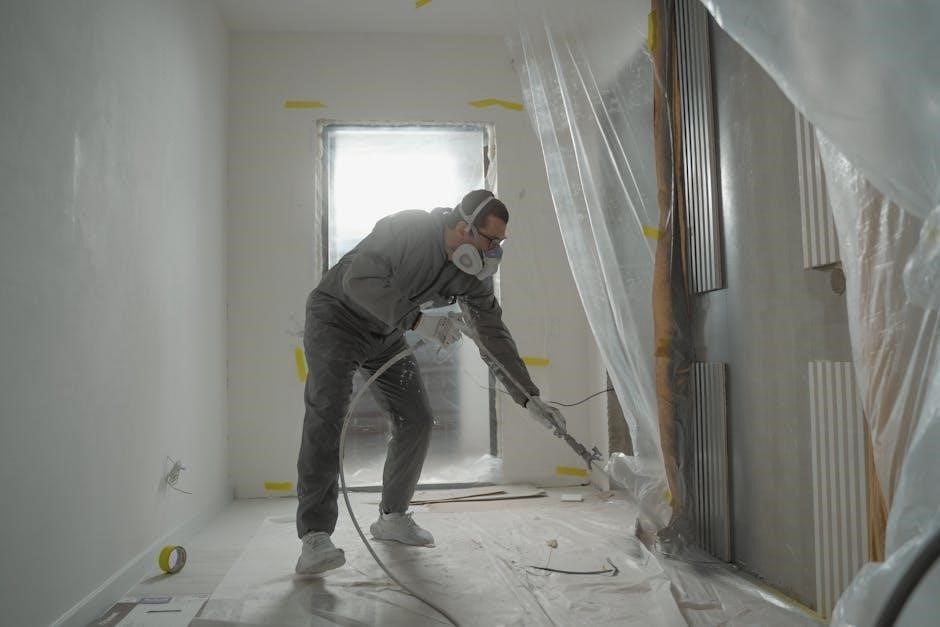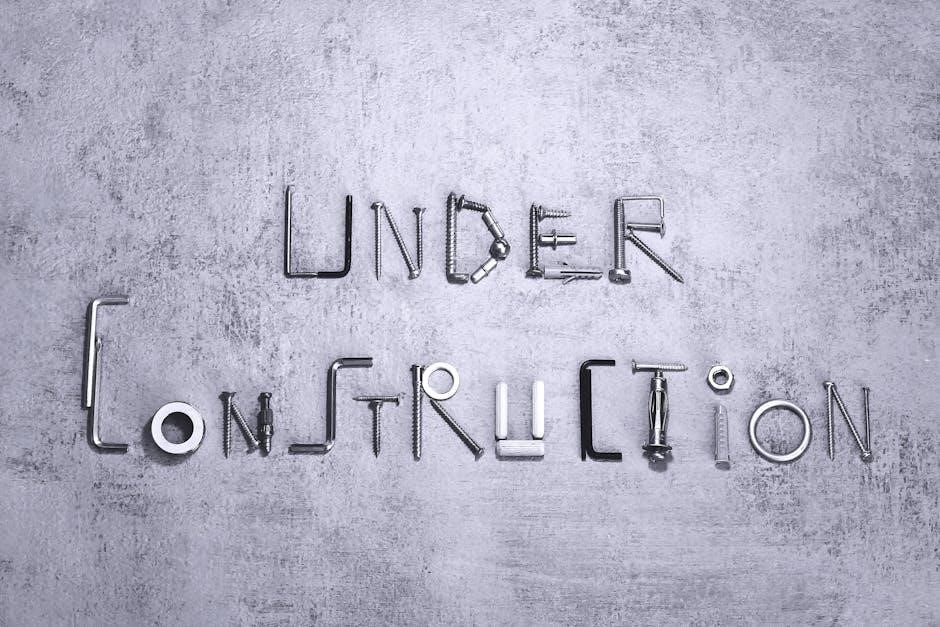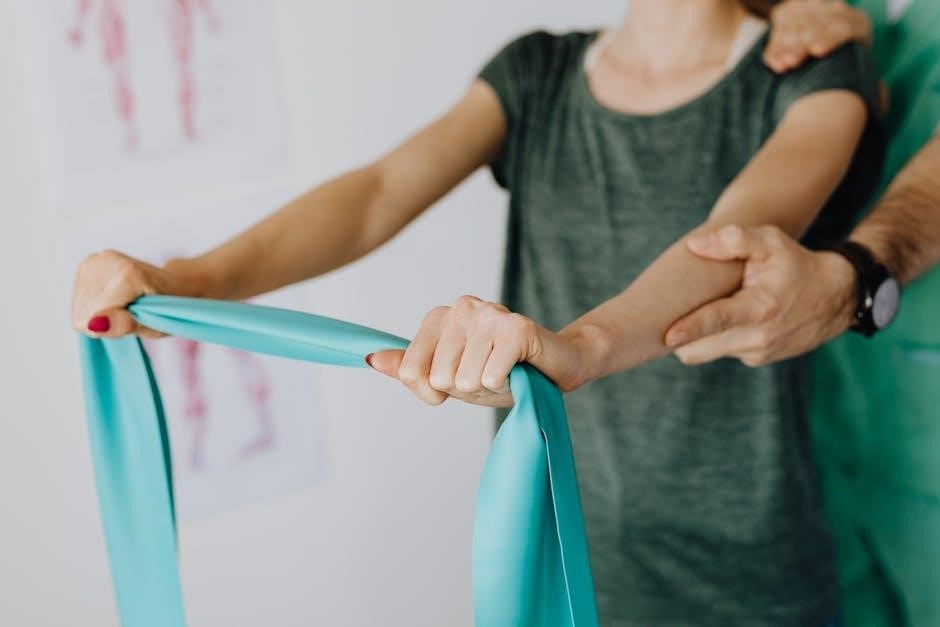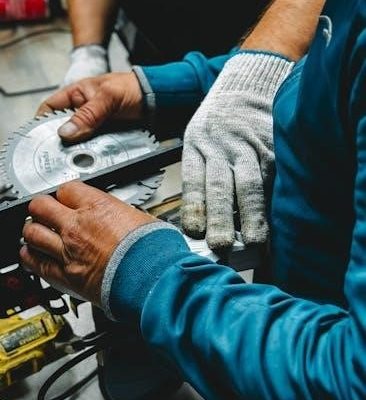This protocol provides a structured approach to rehabilitation after meniscus repair, focusing on protecting the repair, promoting healing, and safely restoring function through time-based progression.
1.1 Overview of Meniscus Repair and Rehabilitation Goals
The primary goals of meniscus repair rehabilitation are to protect the repair, minimize pain, restore range of motion, strengthen surrounding muscles, and progressively return to normal activities. The approach is time-based, focusing on tissue healing and patient-specific functional recovery to achieve pre-injury activity levels safely and effectively.
1.2 Importance of a Structured Rehabilitation Plan
A structured rehabilitation plan ensures the meniscus repair is protected, promoting proper healing and minimizing complications. It provides a time-based approach, focusing on tissue healing and gradual restoration of strength and function. This tailored plan helps patients safely return to activities and prevents future injuries, addressing individual needs and progression.

Phase 1: Immediate Post-Surgical Phase (Weeks 1-3)
This phase focuses on protecting the repair, managing pain, and initiating basic mobility. Patients use a ROM brace and are partial weight-bearing, with exercises aimed at maintaining flexibility and reducing stiffness.
2.1 Weight-Bearing Status and Immobilization
Patients are typically placed in a ROM brace post-operatively, allowing 0-90° flexion. Weight-bearing is limited to partial (PWB) for the first 3 weeks to protect the repair. Immobilization focuses on minimizing stress on the knee, promoting a healing environment, and preventing excessive movement that could compromise the repair site during the initial recovery phase.
2.2 Range of Motion (ROM) and Passive Exercises
Early ROM exercises focus on 0-90° flexion to avoid stressing the repair site. Passive heel slides and assisted knee flexion/extension are commonly used. These exercises prevent stiffness and promote healing without compromising the repair. Regular ROM activities are essential during the initial 3 weeks to maintain joint mobility and reduce the risk of contracture.
2.3 Pain Management and Swelling Reduction
Pain and swelling are managed with cryotherapy, compression, and elevation. Nonsteroidal anti-inflammatory drugs (NSAIDs) may be prescribed to reduce inflammation. Gentle mobilization and intermittent icing (15-20 minutes, 3-4 times/day) are recommended. Monitoring pain levels ensures adherence to the rehabilitation protocol and prevents overexertion during the healing process.

Phase 2: Early Strengthening Phase (Weeks 4-6)
Progression to partial weight-bearing activities is initiated. Strengthening exercises focus on quadriceps and hamstrings, with resistance bands and low-impact mobility drills introduced to enhance functional recovery.
3.1 Progression of Weight-Bearing Activities
During Weeks 4-6, patients progress to partial weight-bearing, with a gradual increase in load. Full weight-bearing is typically achieved by Week 6, provided there is no pain or instability. Brace use continues, especially at night, to protect the repair during this transitional phase of healing and strength recovery.
3.2 Strengthening Exercises for the Quadriceps and Hamstrings
Strengthening exercises focus on quad sets, straight leg raises, and hamstring curls. Patients perform 3-4 sets of 12-15 repetitions daily. Resistance bands or light weights are introduced gradually. These exercises enhance muscle balance, improve joint stability, and prepare the knee for functional activities, ensuring a strong foundation for progressive weight-bearing and mobility.
Low-impact mobility drills, such as straight leg raises, heel slides, and gentle step-ups, are introduced to improve joint mobility and flexibility. These exercises are performed in a controlled manner to avoid stressing the repair site while promoting functional movement patterns and preparing the knee for more dynamic activities.
Phase 3: Advanced Strengthening and Agility Phase (Weeks 7-12)
This phase focuses on strengthening exercises, agility drills, and functional movements to enhance knee stability and prepare for sports-specific activities, ensuring a smooth transition to higher-level tasks.
4.1 Dynamic Balance and Proprioception Training
Focuses on improving joint stability and neuromuscular control through exercises like single-leg stands, BOSU ball training, and wobble board activities. These drills enhance the knee’s ability to adapt to varying surfaces and movements, reducing the risk of reinjury and improving overall functional mobility during this critical phase of recovery.
4.2 Resistance Band and Functional Exercises
Utilizes resistance bands for strengthening the quadriceps, hamstrings, and calves. Exercises include leg presses, step-ups, and mini-squats. Functional activities like lateral walks and balance drills are introduced to mimic real-life movements, enhancing muscle endurance and preparing the knee for more dynamic activities while maintaining proper joint alignment and stability.
Progression to sport-specific drills, such as cutting, pivoting, and agility exercises, is introduced. Emphasizes proper technique and controlled movements to mimic athletic activities while minimizing stress on the repaired meniscus. Customized based on the patient’s sport, focusing on dynamic stability and functional integration to prepare for return to competition or active lifestyles.

Phase 4: Return to Full Activity Phase (Weeks 13+)
This phase focuses on transitioning to unrestricted activities, emphasizing high-level strength, agility, and functional integration. The goal is to restore pre-injury performance while ensuring long-term joint health and stability.
5.1 High-Level Agility and Strength Training
Phase 4 incorporates advanced exercises like plyometrics, agility drills, and explosive movements to enhance dynamic stability and functional strength. Patients progress to sports-specific activities, ensuring readiness for unrestricted participation while maintaining focus on joint health and injury prevention strategies.
5.2 Final Assessment and Clearance for Full Activity
Clearance for full activity requires a comprehensive evaluation of strength, range of motion, and functional ability. Clinical assessment confirms knee stability, absence of pain, and successful integration of sports-specific movements. Final clearance is granted when the patient demonstrates readiness for unrestricted activity, ensuring the repair is healed and functional goals are achieved.
5.3 Maintenance and Injury Prevention Strategies
Post-rehabilitation, ongoing strengthening and neuromuscular training are essential to maintain knee stability and prevent reinjury. Patients should continue low-impact activities and avoid high-risk movements. Regular monitoring and activity modification ensure long-term joint health, promoting sustained function and reducing the risk of future complications or additional surgeries.

Key Considerations and Complications to Avoid
Monitor for complications like stiffness or persistent pain, addressing them early to prevent setbacks. Proper adherence to the protocol minimizes risks and ensures optimal recovery outcomes.
6.1 Recognizing Signs of Complications or Setbacks
Identify complications through increased pain, swelling, or limited ROM. Monitor for persistent stiffness or instability. Early detection of setbacks, such as non-compliance or concomitant injuries, is crucial for timely intervention and preventing prolonged recovery delays.
6.2 Adjustments for Concomitant Injuries or Procedures
Rehabilitation plans must be tailored for patients with additional injuries, such as ACL tears or cartilage damage. Adjustments may include prolonged immobilization, modified weight-bearing, or delayed progression of exercises to accommodate concurrent healing processes and ensure optimal recovery outcomes for all injuries.
6.3 The Role of Patient Compliance in Successful Rehabilitation
Patient compliance is critical for optimal outcomes, ensuring adherence to prescribed exercises, weight-bearing guidelines, and activity modifications. Non-compliance may lead to prolonged recovery or complications, emphasizing the need for clear communication and patient education throughout the rehabilitation process.
Rehabilitation Protocol Variability and Clinical Considerations
Rehabilitation protocols vary based on tear location, concomitant injuries, and patient needs, requiring clinical judgment and collaboration between surgeons and therapists for optimal outcomes.
7.1 Differences in Protocols Based on Tear Location and Type
Protocols vary based on tear location and type, with adjustments for root repairs, bucket-handle tears, or lateral vs. medial meniscus injuries. Rehabilitation timelines and weight-bearing statuses differ, requiring personalized approaches to ensure optimal healing and functional recovery.
7.2 Collaboration Between Surgeons and Rehabilitation Specialists
Effective communication between surgeons and rehabilitation specialists ensures alignment of goals and strategies. Sharing surgical details, tear specifics, and patient progress fosters a coordinated approach, optimizing recovery. Regular updates and feedback loops enable adjustments, ensuring the rehabilitation plan aligns with surgical outcomes for the best patient results.
7.3 Adaptive Strategies for Individual Patient Needs
Rehabilitation plans must be tailored to address individual factors, such as tear location, concomitant injuries, and patient-specific goals. Adjustable timelines and interventions, including bracing and exercise modifications, ensure a personalized approach. This adaptability optimizes recovery outcomes by addressing unique challenges and promoting progressive healing aligned with the patient’s physical and functional needs.

The Role of Bracing and Protective Equipment
Bracing and protective equipment are crucial for safeguarding the knee post-surgery. A ROM brace is typically worn for 3-6 weeks, allowing controlled movement. Brace use during weight-bearing activities and nighttime protects the repair, minimizing stress and promoting healing.
8.1 Types of Braces and Their Indications
Commonly used braces include ROM (range-of-motion) braces, hinged braces, and neoprene sleeves. ROM braces are typically used immediately post-surgery to limit flexion and extension, promoting healing. Hinged braces offer adjustable stability, while neoprene sleeves provide light support. Brace selection depends on the repair type, patient compliance, and surgeon preference, ensuring optimal protection during recovery.
8;2 Duration of Brace Use and Nighttime Protection
Brace use typically lasts 6-8 weeks post-surgery, with nighttime protection recommended for the first 3-4 weeks to maintain stability. ROM braces are often worn for 3 weeks, followed by hinged braces for gradual mobilization. Nighttime bracing ensures the knee remains in a safe position, promoting healing and preventing unintended movement during sleep.
8.3 Weaning Off Protective Equipment Safely
Gradual weaning from braces begins after 6-8 weeks, depending on healing progress. Patients transition to neoprene sleeves for support during activities. Nighttime protection is discontinued once stable, but monitoring for instability or pain during exercises is crucial to ensure safe progression and avoid setbacks.

Return to Sports and Activity-Specific Guidelines
Return to sports requires meeting specific criteria, including full strength, stability, and pain-free function. Sport-specific drills are tailored to mimic athletic movements, ensuring a safe transition to competition.
9.1 Criteria for Safe Return to Athletic Activities
Return to athletic activities requires achieving full knee strength, stability, and range of motion. Patients must demonstrate pain-free functional movements and pass clinical assessments, ensuring the meniscus repair is healed and resilient for dynamic sports demands.
9.2 Sport-Specific Rehabilitation Considerations
Sport-specific rehabilitation involves tailoring exercises to mimic the athlete’s movements, ensuring the meniscus repair can withstand the unique demands of their sport. Functional drills, agility training, and progressive resistance are emphasized, with a focus on restoring power, speed, and coordination to meet the athlete’s specific requirements and ensure a safe return to competition.
9.3 Long-Term Monitoring and Maintenance
Long-term monitoring ensures the meniscus repair remains stable and functional. Annual check-ups, ongoing strength training, and patient education on activity modifications are crucial. Maintenance focuses on preventing re-injury through proper movement patterns and addressing any residual symptoms, ensuring sustained knee health and functionality over time.
The meniscus repair rehabilitation protocol is a structured, evidence-based approach to optimize recovery. Consistent adherence to the protocol enhances outcomes, ensuring patients achieve long-term knee function and stability.
10.1 Summary of Key Rehabilitation Principles
- The protocol emphasizes gradual, time-based progression to protect the repair and promote healing.
- Early focus on ROM, pain management, and strength lays the foundation for advanced phases.
- Load management, mechanical protection, and patient compliance are critical for optimal outcomes.
- Structured exercises and functional drills ensure a safe return to activity and sports.
10.2 The Importance of Patience and Progression
Patient adherence to the rehabilitation timeline is crucial, as premature progression can jeopardize repair integrity. Gradual, controlled advancements ensure proper healing and strength restoration, minimizing the risk of complications. Consistency and compliance with prescribed exercises and weight-bearing guidelines are essential for optimal recovery and long-term knee function.
10.3 Expected Outcomes and Recovery Timeline
Most patients achieve significant improvement in knee function and pain reduction within 6-9 months. Full recovery typically occurs by 12 months, with restoration of strength, stability, and pre-injury activity levels. The structured protocol ensures gradual progression, minimizing complications and optimizing long-term outcomes for patients following meniscus repair surgery.



